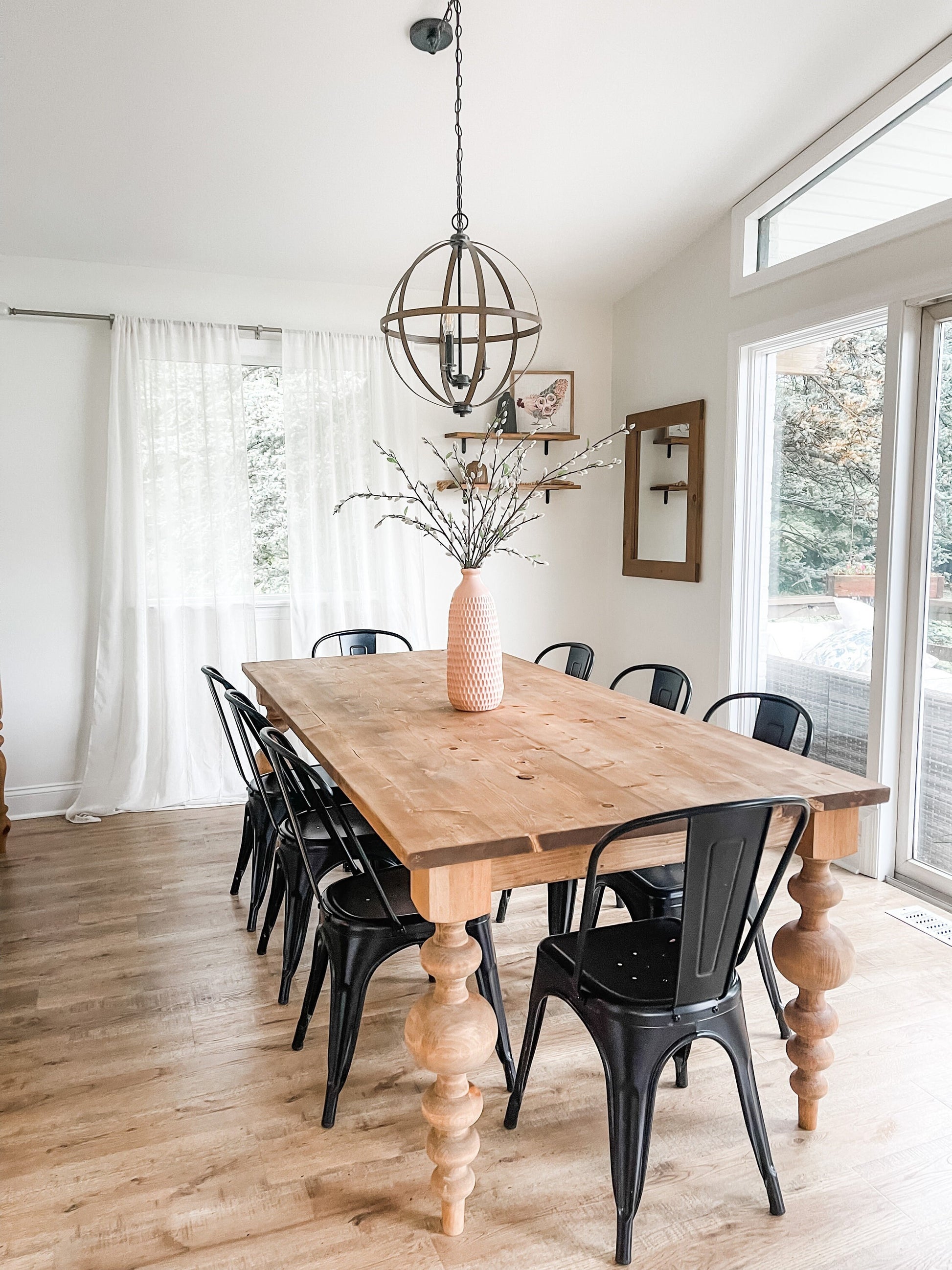The Impact of Dining Room Table Legs on Your Table's Overall Design
The Impact of Dining Room Table Legs on Your Table's Overall Design
Blog Article
From Traditional to Modern: Locate the Suitable Dining-room Table Legs for Your Style
While classic styles such as cabriole and transformed legs stimulate a sense of ageless refinement, contemporary styles like barrette and geometric alternatives present a chance for striking aesthetic interest. As you consider these aspects, the inquiry continues to be: how can you perfectly incorporate these varied leg styles to create a harmonious dining experience?
Understanding Table Leg Styles
The range of dining-room table leg styles can substantially affect both the aesthetics and functionality of the space. Each leg design adds one-of-a-kind sensible attributes and aesthetic aspects, catering to diverse design choices and use needs. Recognizing these styles is vital for choosing the best table that aligns with your total indoor style vision.
As an example, conical legs provide a clean, timeless appearance that can improve a room's elegance, while stand bases supply stability and optimize legroom, making them suitable for smaller spaces. Barrette legs, a trademark of mid-century modern layout, introduce an industrial panache, permitting an airy, open feeling. Trestle legs evoke rustic beauty, supplying robust assistance and a sense of eternity.
Wooden legs can bring heat and texture, whereas metal alternatives typically share a sleek, modern ambiance. Ultimately, comprehending table leg designs is important for developing a natural dining area that mirrors individual style while guaranteeing usefulness and convenience.
Traditional Table Leg Options
When choosing eating area table legs, traditional options commonly personify timeless beauty and craftsmanship. These styles show an abundant heritage and a dedication to top quality, making them perfect for those who appreciate traditional aesthetics.
One of the most renowned conventional leg styles is the cabriole leg, defined by its elegant bent form. This layout often features decorative carvings and is most typically discovered in Queen Anne and Chippendale furniture. One more prominent choice is the transformed leg, which boasts a series of smooth, rounded shapes that provide a traditional look while preserving stability.
Additionally, the straight leg, while easy, uses a tough and basic structure that can blend perfectly with a variety of tabletop styles. For those drawn to ornate outlining, claw-and-ball feet legs evoke a feeling of magnificence and can work as a stunning focal point in any eating space.
Last but not least, stand bases, although not purely legs, offer a different typical alternative that enables for sufficient legroom and can be beautifully sculpted. Each of these standard leg styles adds to the general ambiance of a dining-room, marrying feature with aesthetic appeal.

Modern Table Leg Designs
Modern table leg layouts provide a varied variety of styles that highlight clean lines and cutting-edge materials. These styles often focus on functionality while functioning as striking centerpieces within a dining room. Minimalist aesthetics are common, with legs crafted from products such as metal, glass, and crafted timber, which add to a contemporary and ventilated feel.
One prominent layout is the hairpin leg, defined by its slim, tapered structure that gives stability without overwhelming the table top (dining room table legs). This style is commonly found in mid-century contemporary furnishings and can easily complement different eating table forms. Another pattern is using geometric shapes, where legs may handle unbalanced or angular kinds, including aesthetic interest and a touch of creativity

Blending Designs for One-of-a-kind Rooms
Commonly, house owners look for to produce distinct dining rooms that mirror their individual style by blending numerous style aspects. This method allows for the incorporation of varied aesthetics, causing an unified yet unique environment. Combining a rustic wooden table with streamlined, contemporary metal legs can develop an appealing contrast that raises the room's total charm.
Additionally, incorporating vintage table legs with contemporary table tops can evoke a feeling of history while keeping a contemporary perceptiveness. Such combinations not only showcase private preference but additionally encourage creative thinking, enabling homeowners to curate a room that feels both individual and welcoming.
Color plays an essential check here duty in this blending procedure; selecting table legs that match or comparison with the existing color plan can enhance visual passion. For instance, whitewashed legs can soften the boldness of a dark table surface, developing a balanced visual.
Tips for Selecting the Right Legs
Picking the right table legs is important for attaining both functionality and aesthetic charm in your eating space. Begin by thinking about the total style of your room. Standard setups gain from legs that feature complex makings or transformed designs, while contemporary areas might ask for sleek, minimalist styles.
Next, examine the elevation and security of the legs. dining room table legs. Basic dining tables vary in between 28 to additional resources 30 inches in elevation, so ensure the legs complement this measurement for comfort. Furthermore, durable products, such as wood or steel, can boost security and long life
Evaluate the leg shape as well-- options include straight, tapered, or pedestal designs. more tips here Straight legs provide a traditional look, while tapered legs can add a touch of beauty. Pedestal bases offer adequate legroom and are suitable for smaller sized areas.
Final Thought
In recap, picking the suitable dining room table legs calls for cautious consideration of both typical and contemporary styles. By harmonizing leg design, height, and product with the general décor, a natural and inviting ambience can be accomplished.
The variety of eating room table leg designs can substantially influence both the aesthetics and capability of the area. Inevitably, comprehending table leg styles is essential for producing a cohesive dining location that reflects individual style while making sure practicality and convenience.One of the most renowned typical leg styles is the cabriole leg, identified by its graceful rounded form. Straight legs provide a timeless look, while tapered legs can include a touch of elegance.In summary, picking the perfect eating room table legs needs mindful consideration of both modern and conventional designs.
Report this page